Discover Barcelona's New Museum of Design
- gfoll1
- May 12, 2022
- 4 min read
Blog Post #1
Griffin Foll
11 May 2022
A trip to Barcelona, Spain, cannot be considered complete until you explore the wide variety of art museums the city has to offer. In particular, the Disseny Hub’s Design Museum of Barcelona located roughly a mile east of the Sagrada Familia provides visitors the opportunity to venture through a multi-floor exhibit containing over 70,000 objects of both historical and contemporary influential pieces of art.
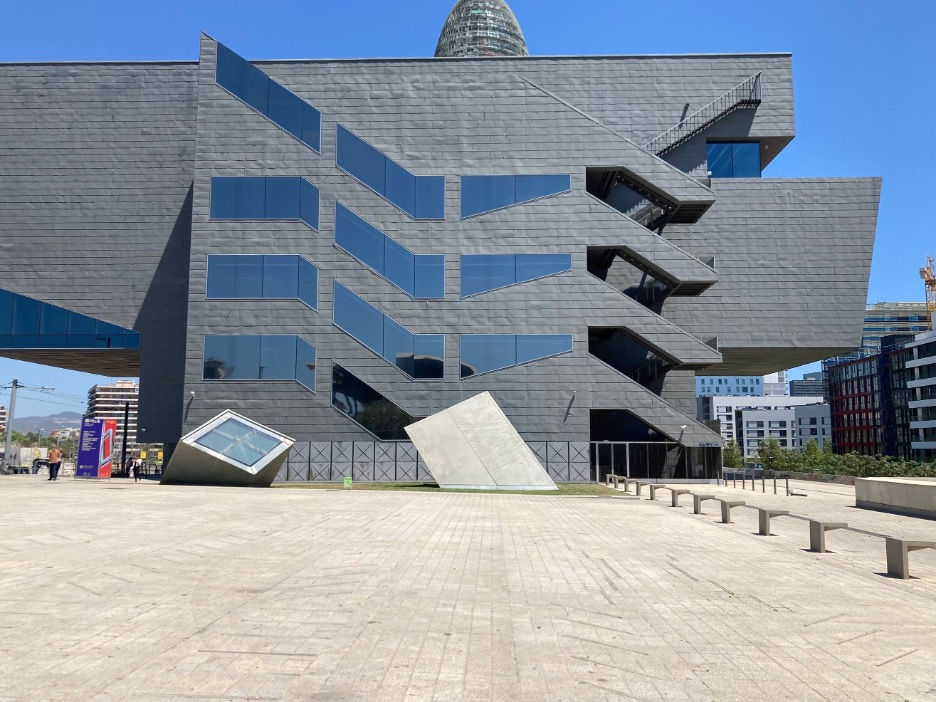
The Disseny Hub was built specifically for the design museum, but the structure is not even a decade old as it did not officially open until 2014. It contains a wide range of art collections that were previously scattered throughout the city. In fact, four different previously existing museums in Barcelona — the Museum of Decorative Arts, the Textile and Clothing Museum, the Cabinet of Graphic Arts and the Casa Bloc Apartment Museum — merged to create the city’s new Design Museum.

After you pay either four or six euros — depending on whether you are under or over the age of 29 — upon entering the main lobby, the museum grants guests access to the next two floors directly above the ground level. Each floor is labeled by its unique theme.
Once you receive your general admission ticket, you will head up either the escalator or elevator and reveal your ticket to an employee on the first floor. The employee will gladly open the ropes and allow you to enter and explore the first floor at which contemporary forms of art and modernism are presented. You’ll first notice signage that reads “Modemisme: toward the design culture.” You’ll enter this section through a glass sliding door before you reach a quaint display of artwork that merges popular local tradition with the modern Mediterranean-based design that Catalan architects sparked at the beginning of the 20th century.
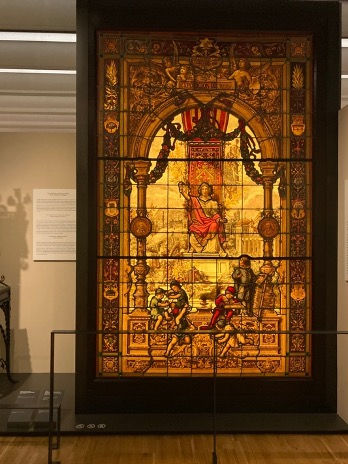
Some forms of pottery were on display, including those that combined the classic and modern artistic styles.

After you’re satisfied with all the first floor has to offer, you won’t want to miss the top accessible as its theme is “Dressing the Body: Silhouettes and fashion. This floor displays the evolution of female dresses across a near 500-year period and reveals the way in which women typically dressed throughout history. The gallery begins with a time frame spanning over two centuries (1550-1789). This collection of dresses is known as “the gentleman and the courtier” in which women’s dresses generally compressed the body.
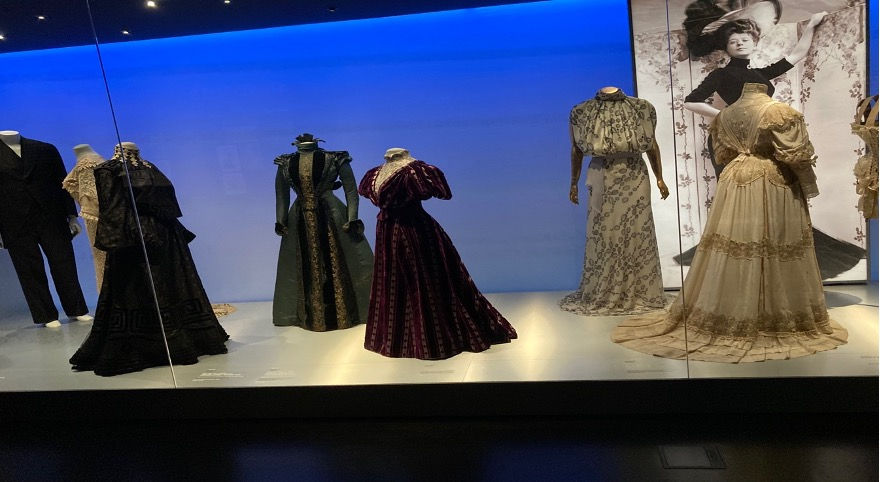
The next phase of women’s clothing spans less than half a century (1789-1825). This era is known as the dress and revolution stage in which the woman’s body and skin became more exposed and set free from classical restriction. You’ll notice how the sleeves expose much more of the women’s skin — particularly their arms.

Perhaps the most distinct style presented in this exhibit is the “age of the bustle,” which was popular from 1868-1888. This dresses during this time frame were designed with a strong emphasis on women’s rear ends as the motto was “what matters is at the back.” A surplus of cloth was utilized to achieve this unique design, so much so that the dresses often drape low enough to touch the floor.

From 1825-1845, the clothing style for females was known as “ethereal ladies,” in which dresses were designed to inflate the body, particularly around the waist. This style quickly became obsolete as it lasted just 20 years and prefaced the tighter clothing styles of the 20th and 21st centuries.

As it pertains to modern times, designers began making clothes and dresses with the intent to outline, shape, and reveal the body. This style became popular in the early 1990s and still exists today.
A group of American tourists who ventured through this section called it a “fascinating collection” that revealed the stark contrast between eras of fashion. “I was most surprised by how long some fashion styles lasted, while others went out of style quick[ly],” Brittany said.
When you return to the ground floor, the museum also contains a graphic design display that you want to ensure you do not neglect. This gallery highlights some of the peak moments and works of Spanish graphic designers during the from the 1980s to the early 2000s.

This section even captures some prominent pieces of art from the 1992 Summer Olympic Games hosted in Barcelona.
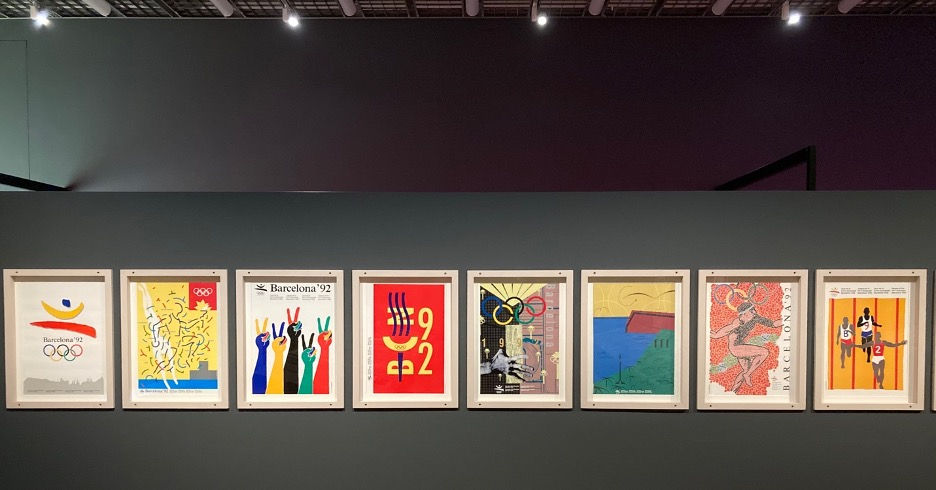
When you are satisfied and finished exploring the works of art, don’t forget to check out the café on the ground level on your way out: Cafeteria del Museu del Disseny. Although the menu prices may be above average, they serve a variety of snacks and refreshments and provide a vast lounging area with tables and couches. The snacks on the menu range from various types of sweet pastries and cakes to warm, savory foods like ham and cheese sandwiches as well as Spanish tortilla. If you’re not overly hungry and would prefer a caffeine boost, you can treat yourself to a café con leche, a cappuccino or any of the other espresso drinks listed on the menu. If you’re craving an alcoholic beverage, the café serves craft beer and wine.
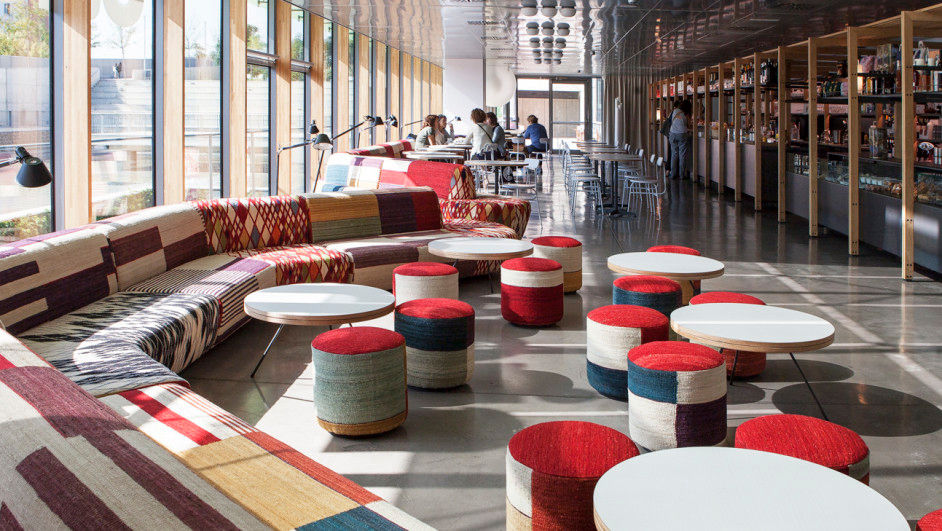
A pair of British tourists who were enjoying some refreshments after their visit called the coffee “superb” and recommended the chocolate-covered croissants. “You ought to try those croissants dipped in dark chocolate. . . I could have eaten a dozen by myself,” Joleen said.

Once you exit the premises, if the weather is pleasant, the building’s exterior includes nearly 30,000 square meters of green public spaces for you to relax and soak up the sun. One French tourist called the green space “magnificent” and labeled it the climax of his experience at the exhibit. “Perhaps my favorite part of the museum was when we departed and joined this large group of people on the vast lawn surrounding the building,” Viktor said. “The weather was amazing, and we enjoyed lying the sun for a while.”



Comments